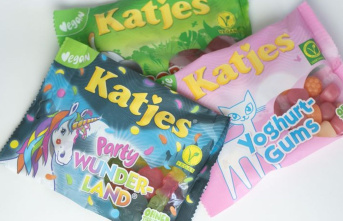Traveling is finally possible again - and according to current surveys, Germans have rediscovered their wanderlust. What is the current status of tourism after the difficult years?
dr Jürgen Schmude: If we look at the current survey results, then we are moving strongly in the direction that we took before the coronavirus pandemic. However, long-distance travel, especially by air, can still be expanded in this respect. Overall, however, one can say that people's desire to travel is unbroken. It may even have increased a bit due to the pandemic.
Long-distance trips are therefore still booked hesitantly. What about intra-European travel?
I assume that travel within Europe will have reached the pre-Corona level again by 2024 - if not even surpassed. German travelers remain true to their line: Spain continues to be in first place, Italy in second place. That also means that mass tourism is back in many places in Europe.
Mass tourism is such a phenomenon that has caused a lot of damage - also in the environment. Why are we still doing this?
Travel is still one of the most important basic human needs. We are more willing to give up many other things before we cut back on vacation. I reckon people are more likely to save on food or other everyday conveniences than on vacations. And even when it comes to vacation, there are still enough parameters that you can turn: the hotel category, the vacation destination, the duration of the trip. That's why we probably don't learn anything from the mistakes of the past, but continue where we left off before the pandemic.
…for package tours and cheap flights?
Something like that. Even people who are badly hit by inflation and the energy crisis do not give up travelling. But of course we're already noticing that they're taking shorter trips or are more likely to compromise on quality than they used to. Despite rising prices, there is still a large low-price segment. This will remain the case in the package tour sector, for example.
And where is the sustainability?
When it comes to sustainability, the supply side is primarily in demand. So far, to be honest, things have been going rather slowly. Our latest surveys show that travelers have a hard time finding the sustainable offerings. And if it does, then the climate-friendly aspect is not communicated clearly enough.
How do I recognize climate-friendly travel offers?
There are a few rough guidelines by which to recognize a sustainable trip. On the one hand, these are often not short trips, so that the journey, which is often one of the most environmentally unfriendly parts of a trip, is worthwhile. On the other hand, care is taken to ensure that you stay in sustainable accommodation. And not just in the ecological sense. It is also about not having a negative impact on the living environment of the locals with your stay.
The key to sustainability also lies in mobility. Is this also the case in tourism?
In any case. No matter what market segment in tourism we are talking about - recreational trip, city trip or beach holiday - the outward and return journey is an important adjusting screw for our climate. According to estimates, it causes at least 60 percent of the ecological footprint of the entire holiday.
The ecological footprint of cruises is particularly serious. And yet the industry is booming again, the number of bookings is increasing...
Yes, the cruise industry is slowly recovering from the corona shock. Above all, people who have already had experience with the cruise often go back on the ship. However, it has become more difficult for shipping companies to acquire new customers. This is also due to the image of the industry, which is particularly widespread among younger travelers: the cruise is considered stuffy and harmful to the climate. And the pictures of crusaders who are stuck on the ship because of a corona lockdown are still reverberating.
Many shipping companies have now included sustainability on their agenda. But does a green cruise even exist?
Many shipping companies are working to become more sustainable. However, one must not forget that the lifespan of a ship is around 50 years. That means it will be quite a while before we can talk about a semi-green cruise. You can't just rebuild a ship like that.
Also read:
From flexibility to early booking discounts: ten ideas for an inexpensive holiday in 2023
From Bavaria to Saxony: These are the ten most popular small towns in Germany
Times Magazine: These are the ten most beautiful places in Europe 2023











